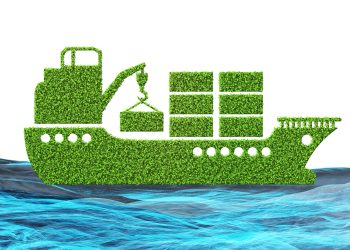The European Commission has found that Finland’s plans to grant €28 million to build a small scale liquefied natural gas (LNG) terminal at Hamina, on Finland’s South-East coast, are in line with EU state aid rules.
The project improves security of energy supply in the region and contributes to reducing carbon dioxide emissions, in line with EU energy and environmental objectives and without unduly distorting competition in the Single Market. In particular, ending the energy isolation of the Baltic Sea Region and integrating it fully into EU energy markets is a key building block for the EU’s Energy Union strategy and one of the priorities of the Juncker Commission.
Commissioner Margrethe Vestager, in charge of competition policy, said: “The Hamina LNG terminal is one of several planned in Finland. These small scale LNG terminals will provide a new source of cleaner fuel for the maritime industry and diversify Finland’s gas supply sources. It is a good example of EU state aid rules encouraging sound public investment and helping the EU reach its energy security and environmental goals.“
There are currently no LNG terminals in Finland, which is dependent on one source for its gas imports. The Hamina project is part of Finland’s plans to create a network of small LNG terminals with the aim of offering LNG fuelling stations for ships and ensuring an additional source of gas for Finland. The Hamina LNG terminal will also contribute to the development of infrastructure supporting alternative fuels in a port that is part of the trans-European transport network (TEN-T).
The project will bring about a significant reduction in carbon dioxide emissions by providing cleaner fuel for transport. At the same time, the LNG infrastructure will increase the security of supply in Finland, providing an additional source of gas for the Finnish gas grid. The Hamina terminal will have a storage capacity of 30 000 m³. The public funding of €27 660 000 will cover 30% of the total investment costs; the remainder will be funded by the developer and future owner of the terminal.
The Commission assessed the project under the 2014 Environmental Protection and Energy State Aid Guidelines. The Commission’s assessment concluded that the project contributes to environmental protection and to the security of gas supply in Finland whilst maintaining competition in the Single Market. In particular, the Commission’s assessment showed that the project could not have been carried out without public funding.
Moreover, the operator of the infrastructure will be under an obligation to provide access to interested users at a regulated price. This will ensure that the aid is limited to the minimum necessary for triggering the investment and that distortions of competition and trade are minimised.
In September 2015, the Commission already approved aid for another small scale LNG terminal, at Pori on the West coast of Finland.
Source: europa.eu





























































